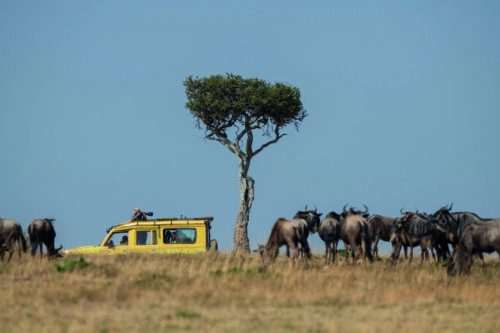How Conservation X Labs solves its most significant challenges.
To say that artificial intelligence (AI) and machine learning (ML) have changed the world would be putting it lightly. Not since the early days of smartphones has technology garnered such widespread innovation and disruption. Yet, for all the good AI and ML have done, these technologies have also generated their fair share of unrest, the root of which is the fear that AI may one day entirely supplant human intelligence.
Fortunately, this fear is largely unfounded. While AI and ML will inevitably replace some careers, the reality is that machine intelligence is at its best when augmented by human intelligence. The two are—and always will be—complementary, with each capable of performing tasks that the other cannot.
This is particularly evident where monitoring and data management are concerned. AI is capable of analyzing and organizing an immense volume of data in real time and at a speed well beyond the capacity of any human. The potential applications of this functionality are unprecedented… provided one can overcome the challenges.
“One [compelling use case for ML] is wildlife conservation,” writes Sam Kelly, Conservation Technology Director & Project Lead: Sentinel AI at Conservation X Labs. “Organizations that work in the wildlife conservation space are performing ML inference on the edge to study, track, and protect endangered species. Tools such as tracking cameras and environmental sensors are producing data that can be coupled with ML to better inform conservation and protection efforts.”
Founded in 2015, Conservation X Labs is a technology startup that leverages edge AI to help prevent the sixth mass extinction. Although wildlife conservationists have worked tirelessly to protect the environment, their efforts have not been enough. They simply haven’t been able to operate on the scale or at the pace necessary to prevent large-scale habitat and wildlife destruction.
Through collaboration with the ML development platform Edge Impulse (edgeimpulse.com), Conservation X Labs intends to change that.
Computation without the cloud
“[Conservation X Labs] focuses on the drivers of the [extinction] crisis, not the symptoms, to confront the issue at its source,” Kelly continues. “To support these efforts, Conservation X Labs [has] engineered innovative monitoring and tracking technologies such as Sentinel.”
Built with Google’s Coral AI toolkit, Sentinel is designed to augment existing wildlife-tracking tools and systems such as trail cameras and audio recorders. It leverages satellite and cellular networks to provide conservationists with comprehensive, real-time data on everything from invasive species to disease to possible wildlife trafficking. Sentinel represents one of Conservation X Labs’ two flagship products—the other being the Nucleic Acid Barcode Identification Tool (NABIT), which provides on-demand genetic diagnostics in the field.
Kelly notes that real-time monitoring and analysis represent the foundation of tools like Sentinel. This means that such devices must be capable of low-latency computation, which—in most cases—requires a connection to a cloud data center. This wasn’t an option for Conservation X Labs.
“Wildlife detection and tracking devices are often deployed in isolated and remote locations,” Kelly explains. “Out in the field, cellular connectivity is virtually nonexistent. For wildlife conservation devices to do their job most effectively, they need the longest battery life possible, as battery replacements for remotely deployed cameras are an unrealistic option.”
Conservation X Labs identified edge computing as the most likely technology to support its needs; this would allow the company to limit the amount of data sent and received by its remote devices, thereby preserving battery life. It would also ensure that the systems could operate without requiring a constant network connection. Unfortunately, even as it addressed these challenges, it encountered several more:
- For each animal in a region, Conservation X Labs had to develop both a data set and a machine learning model.
- Machine learning is an industry in flux, with constantly evolving libraries, dependencies, and algorithms.
- Conservation X Labs lacked the necessary workforce to maintain and operate a platform such as Sentinel.
“After trying many other tools, Conservation X Labs discovered Edge Impulse,” explains Kelly. “Edge Impulse’s platform makes the development, optimization, and deployment of ML models at the edge extremely easy and accessible. The platform enables developers to manage the workload at a high level, encompassing everything from data preparation and data selection to model selection, model training, and model deployment, including device-specific binaries.”
Enabling a smarter approach to wildlife conservation
We can no longer afford to ignore the impending extinction crisis. As with climate change, we are rapidly approaching the point of no return. If there is any hope of pulling our world back from the brink, conservationists must adopt a new approach, one supported and empowered by smart technology uncoupled from networks and data centers.
Yet this technology is not without its challenges, from battery life and connectivity to training and lifecycle management. Through edge computing, Conservation X Labs managed to overcome the former two roadblocks. As for the latter, it came down to selecting the right partner.
“Thanks to Edge Impulse, Conservation X Labs developed edge devices to monitor, detect, and ultimately protect endangered wildlife,” Kelly concludes. “Conservation X Labs believes these advanced technologies can help restore balance to the natural world and prevent future crises from occurring.”

